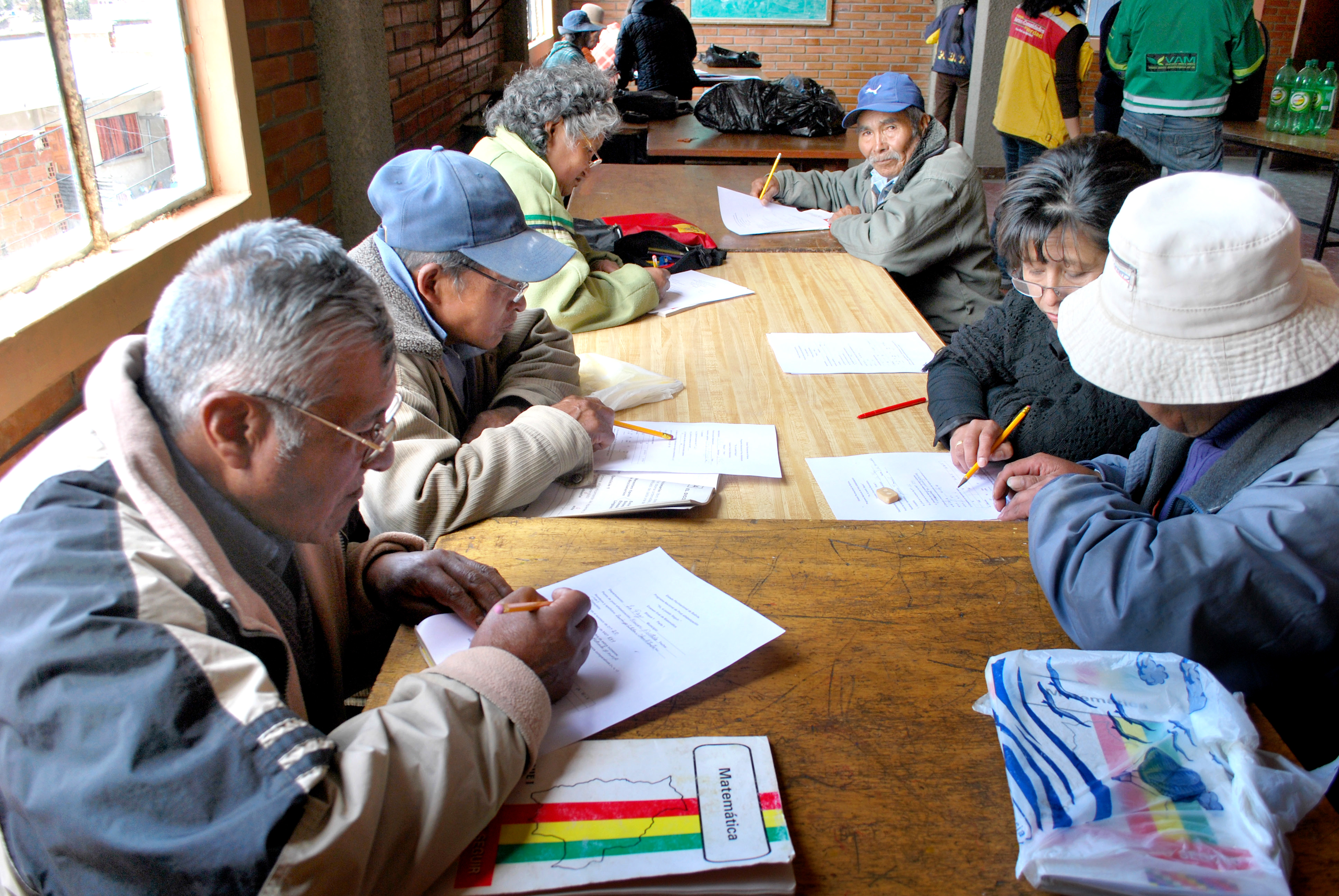Bolivia
La Paz Municipality
Since May 2015
 11th.
Winner
11th.
Winner
The Neighborhood and Communities of Truth Program is a participatory instrument created in 2005 and aims to serve the 300 neighborhoods with the highest poverty rates, in addition to the 53 rural communities of the Municipality of La Paz.
More than Concrete and asphalt for the families of the “neighborhood of the truth”
Before the challenges of climate change and accelerated urbanization, the city of La Paz has begun a process of multidimensional adaptation, with international alliances and citizen participation to progress in achieving the Sustainable Development Objectives (SDO).
In the last 11 years, more than 110.000 inhabitants of the most depressed neighbourhoods of the urban area of the city and some rural communities have achieved, with their participation and compromise, and the support of local government, to progress in this way and improve their life conditions, thanks to the intervention of Truth Neighborhoods and Communities Program (PBCV); not only for the physical infrastructure, also for the capacitation programs and personal, social and community development.
This municipal program was created in 2005 by Juan Del Granado (former Mayor of La Paz), with the objective of cutting the urban marginality in the rural communities of the city. From its creation, the PBCV has dignified the life of more than 110.000 inhabitants living without basic services and surrounded of precarious conditions, insalubrity and insecurity in 5 “macro districts” and 7 communities of 2 rural districts of the municipal territory.
In about 10 years, around 6000 families have received for free home bathrooms, and at least 5000 owners got real folios and free cadastral certificates, which regularize the owner right over their dwellings. Citizen security, access to services like transport, recreation spaces and sport, improvement of health and education facilities are other results of the program that shows the change in the life quality of citizens.
The involvement of neighborhood organizations in all the phases of the Program -from identification of neighborhoods to intervene, activities planning, assignation of budget and supervision of the execution of the works- has result to be a fundamental factor to create high levels of neighbor co-responsibility and compromise with sustainability and maintenance of infrastructures and changes in behavior.
Local government recognizes that concrete and asphalt are not enough to transform a neighborhood and reduce Indices of marginality. That’s the reason why the programs of human development promoted by PBCV are as or more important than the building’s construction. Once the buildings are finished, PBCV organizes management committees so the neighbors can decide democratically how to invest the budget, control the execution of the works and have access to all municipal services.
High social participation and involvement of the community in intervened areas drew the attention of international donors, such as the World Bank and the Inter-American Development Bank, who have accompanied the Program's travel in all these years, granting financing through credit.
In the neighborhoods and communities benefited by the program, all neighbors learn to take care of their natural environment in campaigns of cleaning, afforestation, trash recycling. Workshops are held and drills are organized so that neighbors learn to prevent risks and emergencies and contribute to citizen security.
The program also promotes the development of human capacities with specific programs for each group of age. In communal houses children have access to free dance, music and refresher lessons, there are courses of first aids, leadership and vocational orientation for young, elder assist to occupational therapies, women of all ages learn pastries, cooking, sewing and knitting in the Women's Houses that operate in 24 “Trues Neighborhoods”.
What’s more, it is promoted the woman as economic motor of the homes. They expose their products and show all what they have learnt in periodical fairs.
In 2016, concluded the interventions in 10 new True Neighbourhoods, with paved, asphalted and public street lighting; plumbing, plumbing and drainage systems; communal houses, sports fields, parks and family recreation areas. With them, there are a total of 93 neighborhoods and 7 rural communities intervened. It is projected that, by 2020 La Paz will have 200 True Neighborhoods and 10 True Communities.
The program was recognized by World Bank as one of the most successful of the World executed with its support.
“This program is an example for other countries where the Bank has projects, it is a successful initiative and I am impressed by the strong participation of the community during the process. The success of this project is not only the works, also that they (the neighbors) feel like owners” (Anne Wellenstein, Sectorial Gerent of World Bank, 2016).
“It is one of the most successful projects of World Bank in Bolivia, is the Star project” (Hasan Tuluy, vice President of World Bank, 2014).
“This project has served as a guide for other countries like Ecuador and Guatemala, with whom the achievements and knowledge of this successful project have been exchanged” (Nicola Pontara, World Bank Representative in Bolivia, 2015).

“Extremely interesting project that seems to have included participation throughout its realization”